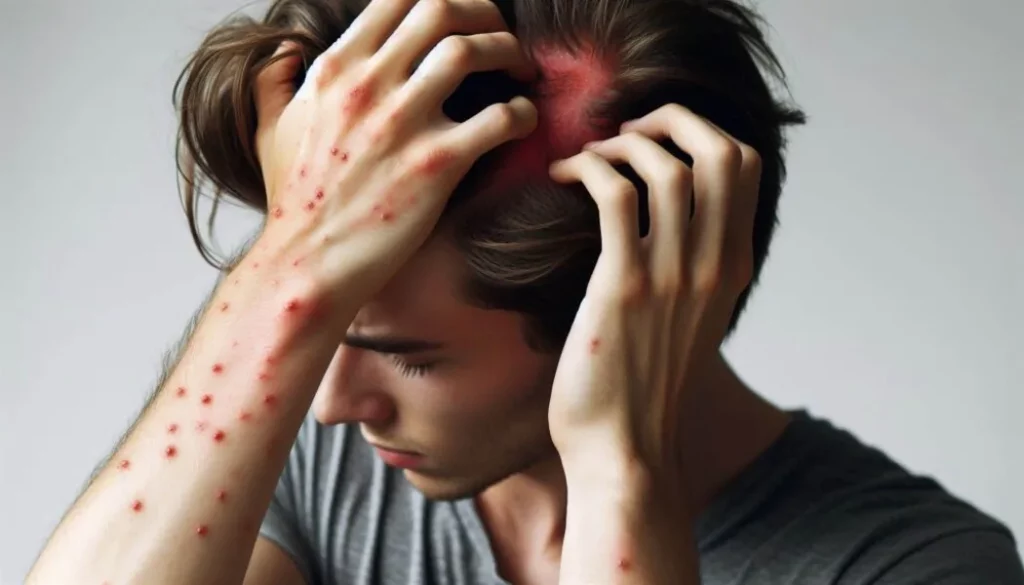Seborrheic dermatitis might sound like a mouthful, but if you’ve ever dealt with it, you know it’s no joke. This frustrating scalp condition causes flakiness, redness, and discomfort—leaving many of us feeling like we’re stuck in a never-ending snow globe ❄️.
That’s where natural remedies step into the spotlight. They’re often gentler than chemical treatments and bring relief without the harsh side effects.👉 Cleveland Clinic offers a reliable overview of natural solutions that can help ease symptoms effectively. Think tea tree oil, with its antifungal powers, or soothing aloe vera that calms inflammation and reduces itchiness. Mother Nature didn’t hold back when it came to healing plants!

And get this—ingredients like honey and apple cider vinegar can help restore your scalp’s balance. Since a particular yeast (Malassezia) is often behind seborrheic dermatitis, these natural options work by keeping those levels in check.
Let me get personal: after years of trying every cream and prescription, I found the real solution hiding in my kitchen. Mixing coconut oil with a few drops of lavender essential oil became my go-to. It not only reduced the flakes but made my scalp feel like it could finally breathe again.
Exploring natural remedies isn’t just trial and error—it’s forming a team of trusted allies. Antifungals, anti-inflammatories, and nourishing oils all work together to bring peace back to your scalp.
Diet and Lifestyle Modifications 🌱: Key Players in Healing
What you eat directly impacts the health of your skin—especially when you’re fighting something as persistent as seborrheic dermatitis. Certain foods, like dairy, fried snacks, and sugary treats, are known culprits. They can stir up inflammation, disrupt your body’s balance, and make flare-ups even worse.
Quality sleep and stress management might sound like clichés, but they’re surprisingly effective tools in your healing arsenal. Sleep helps regulate your immune response, while stress can throw your hormones—and your skin—completely off track. Daily rituals like meditation or even a few mindful breaths can make a big difference. 🌿

A diet packed with anti-inflammatory foods offers a real advantage. Load up on leafy greens, omega-3-rich fish, berries, and avocados. These foods help soothe internal inflammation and provide your skin the nutrients it needs to recover and thrive.
Cutting back on alcohol isn’t just about skipping cocktails—it’s about protecting your skin’s hydration and reducing inflammatory triggers. Less alcohol = happier scalp.
The bottom line? Healing seborrheic dermatitis isn’t just about what you apply externally. It’s also about creating internal harmony through what you eat, how you rest, and how you care for your body. Your fridge and your mindset can become powerful allies in the fight. 🧘♂️
🌿 Advanced Natural Treatments and Alternatives
When it comes to calming seborrheic dermatitis, sometimes you’ve got to bring out the greener heavy-hitters. Natural antifungals like tea tree oil are frontline defenders—they target the root causes deep in your scalp and deliver fast relief.
But we’re not stopping at basic home tricks. Scalp treatments made with plant-based oils, nourishing masks, or botanical rinses can transform your routine. For instance, coconut oil blended with rosemary or peppermint not only eases itching and flakes, but also leaves your scalp feeling cool and refreshed. And the bonus? Your hair will love the extra hydration.
Once you’ve tackled the inflammation, it’s time to think about restoring healthy hair growth. Biotin is a favorite natural ally for strengthening strands, while options like low-level laser therapy and natural DHT blockers can provide a more high-tech edge to your holistic toolkit. ⚙️🌱

These therapies aren’t just band-aids. They help reset your scalp’s balance and create a foundation for long-term health. Best of all, the journey is yours to customize—natural solutions and modern innovations can absolutely go hand in hand. ✨
🌈 A Positive Outlook: Where Hope Meets Health
Embracing a hopeful mindset can be a true turning point in managing seborrheic dermatitis. 🌟 It’s not about quick fixes—it’s about knowing that with consistent care and smart choices, relief is within reach.
Reading or hearing real-life testimonials from others who’ve found success is often more powerful than any prescription. It reminds us that progress is possible—with dedication, knowledge, and trust in the healing process

As research into natural skincare grows, the future looks bright. New insights and formulations are constantly emerging, many of which complement holistic routines. The mix of modern science and time-tested nature is becoming stronger every day.
By tuning in to your body’s signals and adjusting your routine accordingly, you’re building not just healthier hair—but confidence too. Every little victory, from reduced flaking to a peaceful night’s sleep, adds up to a big shift in your story. This journey is yours—and it’s worth every step. 💪
Stay with us — the best is yet to come.
By following our advice, you’re doing the most you can for your hair.
Be the first to know when we publish new guides, tests, and proven strategies for stronger, healthier hair.
👉 Visit the About Me page to learn more about my journey, mission, and why helping people with hair health is so personal to me.
Want healthier, stronger hair? Discover 8 science-backed habits that protect your scalp and boost natural growth. Get your free PDF guide today!
Disclaimer: This article is for informational purposes only and is not a substitute for professional medical advice. Sensitive claims are supported with scientific references, and full product details can always be found on the official websites of the respective manufacturers or distributors.
Some links in this article are affiliate links. If you choose to make a purchase through them, I may earn a small commission at no extra cost to you — helping me keep HairGrowGenius running. Thank you for your support!

✅ FAQ: Natural Remedies & Latest Treatments for Seborrheic Dermatitis
❓Which natural remedies have clinical evidence for treating seborrheic dermatitis?
Well-designed clinical trials support 5% tea tree oil shampoo, which reduced symptom severity by 41% versus 11% with placebo. Other promising natural options include aloe vera, olive oil, coconut oil, probiotics, and apple cider vinegar
❓How do antifungal OTC treatments compare to home remedies?
Topical antifungals like 1–2% ketoconazole, 1% ciclopirox, 1% zinc pyrithione, and selenium sulfide have strong clinical backing for reducing Malassezia-related inflammation. Home remedies can help as adjuncts but are generally less potent than proven OTC therapies.
❓Are there any emerging prescription treatments?
Yes – roflumilast foam (Phase III) showed that 80% of patients with moderate-to-severe symptoms experienced full or partial clearing after 8 weeks. Topical calcineurin inhibitors like tacrolimus and pimecrolimus are also effective steroid-sparing alternatives.
❓Can diet or gut health impact seborrheic dermatitis?
Although evidence is still emerging, yeast/mold elimination diets and probiotic supplementation may help manage symptoms. The gut–skin axis is becoming an increasingly important focus in SD care.
❓Are there any novel topical ingredients being researched?
Recent studies highlight chitosan (from crustacean shells) for its antimicrobial and anti-inflammatory properties. Herbal creams containing honey, turmeric, and vitamin B12 have also shown improvements in dryness and irritation in pilot studies.
❓What practical advice should people follow?
1. Use proven antifungal shampoos like ketoconazole, zinc pyrithione, or selenium sulfide.
2. Incorporate gentle natural options like diluted tea tree oil, aloe vera, or coconut oil.
3. Consult a dermatologist for prescription options if needed.
4. Support gut health with probiotics, balanced diet, stress reduction, and proper sleep.
🧠 FAQ section added on June 25, 2025, to keep this post updated with the latest research.


Leave a Reply